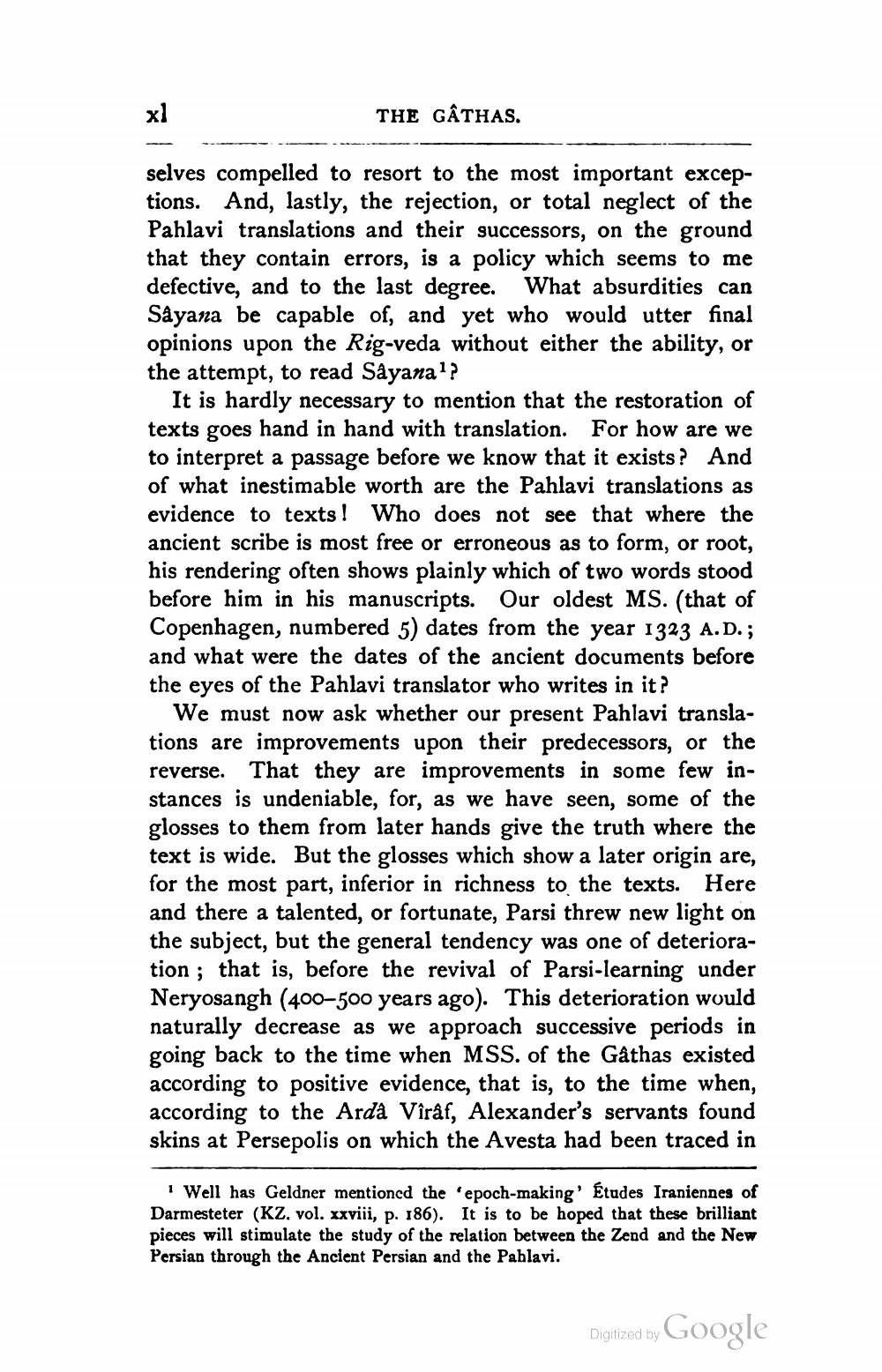________________
THE GÂTHAS.
selves compelled to resort to the most important exceptions. And, lastly, the rejection, or total neglect of the Pahlavi translations and their successors, on the ground that they contain errors, is a policy which seems to me defective, and to the last degree. What absurdities can Sayana be capable of, and yet who would utter final opinions upon the Rig-veda without either the ability, or the attempt, to read Sayana ??
It is hardly necessary to mention that the restoration of texts goes hand in hand with translation. For how are we to interpret a passage before we know that it exists? And of what inestimable worth are the Pahlavi translations as evidence to texts! Who does not see that where the ancient scribe is most free or erroneous as to form, or root, his rendering often shows plainly which of two words stood before him in his manuscripts. Our oldest MS. (that of Copenhagen, numbered 5) dates from the year 1323 A.D. ; and what were the dates of the ancient documents before the eyes of the Pahlavi translator who writes in it?
We must now ask whether our present Pahlavi translations are improvements upon their predecessors, or the reverse. That they are improvements in some few instances is undeniable, for, as we have seen, some of the glosses to them from later hands give the truth where the text is wide. But the glosses which show a later origin are, for the most part, inferior in richness to the texts. Here and there a talented, or fortunate, Parsi threw new light on the subject, but the general tendency was one of deterioration; that is, before the revival of Parsi-learning under Neryosangh (400-500 years ago). This deterioration would naturally decrease as we approach successive periods in going back to the time when MSS. of the Gâthas existed according to positive evidence, that is, to the time when, according to the Ardà Vîråf, Alexander's servants found skins at Persepolis on which the Avesta had been traced in
1 Well has Geldner mentioned the 'epoch-making' Etudes Iraniennes of Darmesteter (KZ, vol. xxviii, p. 186). It is to be hoped that these brilliant pieces will stimulate the study of the relation between the Zend and the New Persian through the Ancient Persian and the Pahlavi.
Digitized by Google
Digitized by




